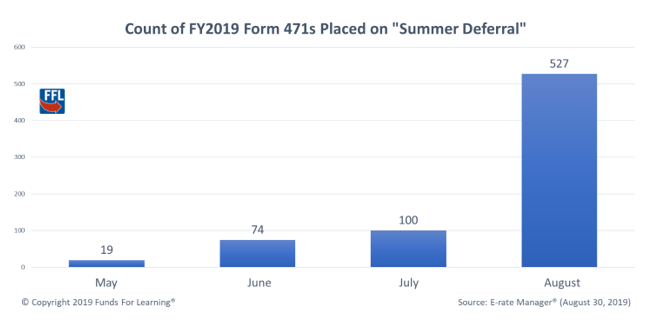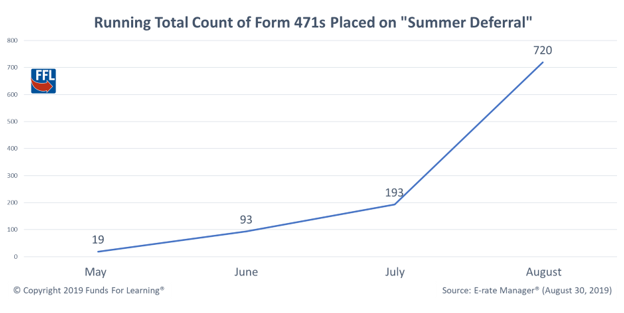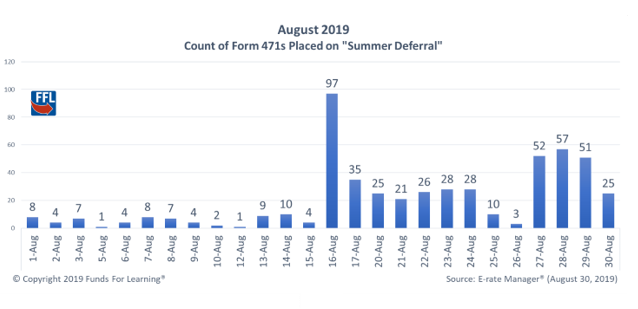The strain between these two needs certainly is visible when it comes to communications between an applicant and USAC. In order to complete its application review, USAC needs information. If an applicant does not respond to USAC’s information requests, at some point, USAC must move on and base their funding decision on whatever information that they have, even if it is incomplete. Many times, this scenario, understandably, results in a funding denial. Fortunately, there are clear “If USAC Cannot Reach You” guidelines that govern this process. These are intended to guard the interests of all parties.
There is an important exception made to USAC’s communication protocols during summer months. If, after several attempts, USAC is unable to reach an applicant, their Form 471 review process can be placed on hold for a “Summer Deferral”. This is important for schools and libraries who have limited staff (e.g. part-time or, perhaps, even volunteers) who are responsible for E-rate paperwork and who may not be available to respond to USAC inquiries. It would be unfair to deny these applicants funding simply because they cannot afford a fulltime staff. That is why Summer Deferral is so important to the application process and USAC should be applauded for making this option available to applicants.
This brings us to where things stand today, at the end of August 2019. There are reports that some funding applications have been switched to “Summer Deferral” unnecessarily or without proper notification from USAC. Indeed, there are a significant number of applications that have recently seen their status switched. Of the 720 applications currently listed with a status of summer deferral, 527 of them were switched in the month of August. In fact, on one day alone, August 16, 2019, there were 97 applications that changed to summer deferral status. In total, the current summer deferral applications represent 502 different applicants and a total of $213,872,108 in funding requests.
The 7th Report & Order establish goals for the September 1 processing of “workable” E-rate applications. It also provides an exemption for applications under summer deferral:



